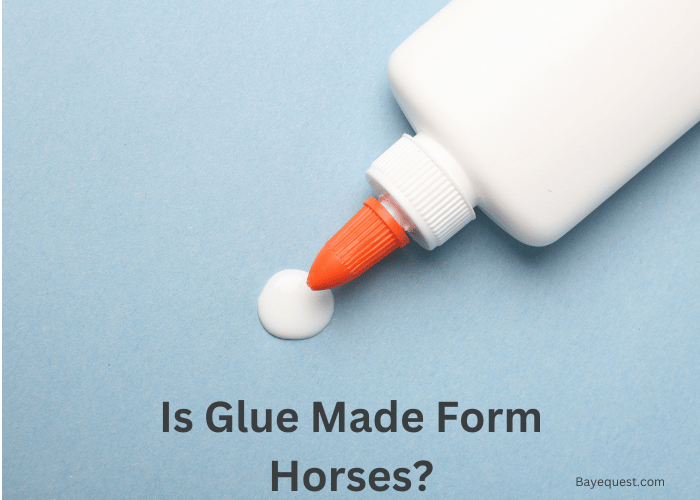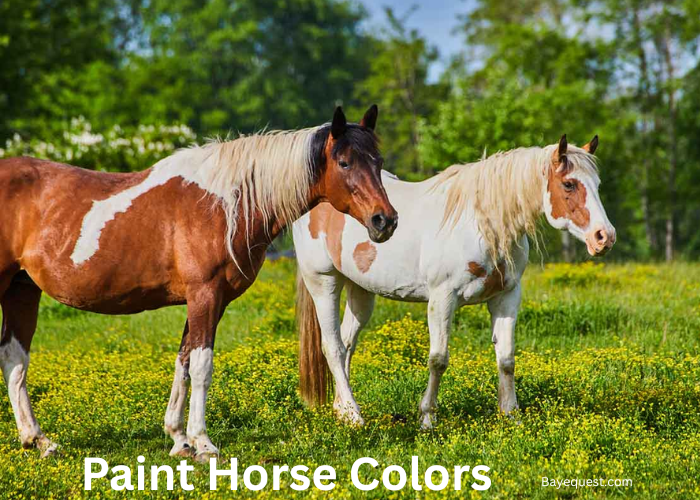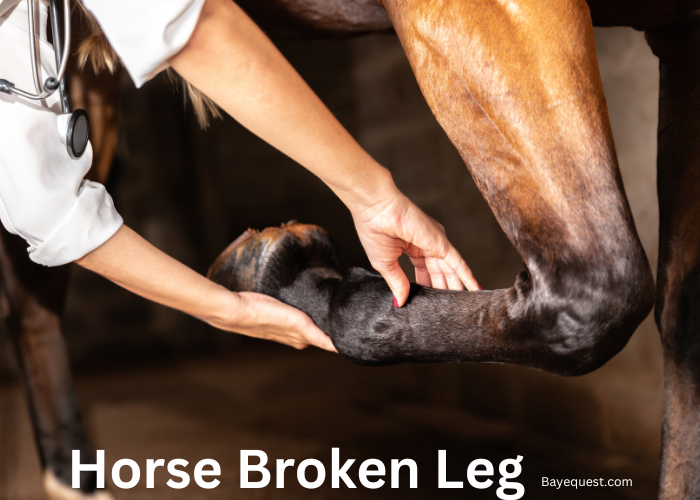Ever heard the saying, “Put out to pasture?” Turns out, not all horses get that luxury. Some end up in a sticky situation—literally.
Yep, we’re talking glue. The stuff you used in school might have a surprising past. But don’t worry, it’s not as grim as it sounds.
Glue has a fascinating history. It goes way back. People have been making sticky substances for centuries. And horses? Well, they played a part.
Curious to know more? Let’s dive in. We’ll unravel the truth, bust some myths, and explore what glue’s made of today.
Is Glue Made From Horses? Key Takeaway
No, glue is not made from horses today. Modern glues are synthetic, created from chemicals. Historically, animal parts, including those from horses, were used. Today’s adhesives are cruelty-free, ensuring no harm to animals. Use glue confidently, knowing it’s made without animal products.
Are Horses Killed for Glue?
Short answer: not anymore. Long ago, yes, horses were used to make glue.
Their hides, hooves, and bones were boiled to create a sticky substance. It wasn’t just horses; other animals were used, too.
But today, things have changed. Modern glue is mostly synthetic.
Factories use chemicals, not animals. The process is more efficient and humane. So, no, horses aren’t killed for glue anymore.
It’s a sticky myth, but the truth is clear. Next time you grab a glue stick, you can do it guilt-free. No horses were harmed in the making of that adhesive.
What is Glue Made Out of?
Glue has come a long way from its ancient origins. Today, most glues are made from synthetic materials. Here’s a quick rundown of what’s in modern glue:
1. Polyvinyl Acetate (PVA)
This is the main ingredient in white glue, like what you use in school. It’s a type of plastic that sticks well to paper and wood.
2. Epoxy
Epoxy glues are super strong. They’re used for heavy-duty jobs like fixing metal and plastic. They come in two parts that you mix before using.
3. Polyurethane
This type of glue is waterproof and very strong. It’s great for outdoor projects and can bond wood, metal, and plastic.
4. Cyanoacrylate
Known as super glue, this stuff sticks almost anything together in seconds. It’s perfect for quick fixes.
5. Hot glue
Made from thermoplastic, hot glue is used with a glue gun. It’s handy for crafts and repairs because it sets quickly as it cools.
6. Natural ingredients
Some glues still use natural ingredients like gelatin or casein (from milk). These are used in specific applications, like food packaging or woodworking.
History of Glue
Glue has been around for thousands of years.
Early humans used natural adhesives like tree sap, tar, and blood. These substances helped them make tools and build shelters.
Ancient Egyptians improved glue-making techniques. They used animal-based glue for woodworking and papyrus. This allowed them to create complex structures and artifacts.
During the Middle Ages, glue evolved further. Europeans used glue for bookbinding and furniture making. They made it from fish bladders, cheese, and animal hides.
By 1500 BC, Greeks and Romans perfected fish—and milk-based glues, which became essential in arts, crafts, and everyday life.
In the 18th and 19th centuries, animal glue became popular. It was made by boiling animal hides, bones, and hooves.
This glue was used in carpentry, art, and early industry. The first glue factories appeared in the 19th century.
This period also saw the myth that horses were killed for glue, though it was mostly byproducts from other industries.
The 20th century saw major changes. Synthetic glues were developed, especially during World War II. Polyvinyl acetate (PVA) became common for its versatility and safety.
New adhesives like epoxy and superglue emerged. These provided strong bonds for both industrial and consumer use.
Today, glue is mostly synthetic. It comes in many forms for different tasks. There are super glues for quick fixes and epoxies for heavy-duty bonds.
There is also a move towards eco-friendly glues. These use renewable resources and safer methods. The history of glue shows human creativity in finding ways to stick things together.
What is Animal Hide Glue?
Animal hide glue is a type of adhesive made from the collagen in animal hides. People have used it for centuries.
It’s good for woodworking and repairing musical instruments. The glue is strong and flexible, which is why craftsmen love it.
How is Animal Glue Manufactured?
To make animal hide glue, you start with animal hides, usually from cows or horses. The hides are cleaned and soaked to remove any dirt.
Then they are boiled down. This process extracts collagen, which is the key ingredient. The collagen turns into a sticky, gelatin-like substance.
Once it’s boiled, the mixture is filtered and dried. The result is a solid block of glue.
When you need to use it, you just add water and heat it up. It turns back into a liquid, ready to apply.
One of the best things about hide glue is that it bonds well with wood. It seeps into the pores and creates a strong joint.
Plus, it’s reversible. You can just reheat the glue if you need to fix a mistake. This makes it perfect for delicate repairs, like those on antique furniture or instruments.
Animal hide glue might sound old-fashioned, but it’s still valued today.
When Did They Stop Using Horses for Glue?
The use of horses for glue declined in the early 20th century. This change was driven by advancements in synthetic materials.
During World War II, the need for better and more efficient adhesives grew. Scientists developed new, synthetic glues that were stronger and easier to produce.
By the mid-20th century, synthetic glues had largely replaced animal-based ones. Factories began using chemicals to create adhesives.
These new glues were not only effective but also more consistent in quality. This shift meant there was no longer a need to use horses or other animals for glue production.
Today, animal-based glue is rarely used. Most adhesives you find in stores are synthetic.
They are made from polyvinyl acetate (PVA), epoxy, and polyurethane. These modern glues are designed for specific purposes and are much more versatile.
So, while horses were once part of the glue-making process, they haven’t been used for many decades.
Other Animal Derived Glues
Animal-derived glues have a long history and are still used in some specific applications today. Here are a few notable examples:
1. Fish glue
- Made from the skin and bones of fish, this glue has been used for centuries.
- It’s known for its clarity and flexibility, making it popular in woodworking and bookbinding.
- Fish glue is still used by craftsmen who appreciate its unique properties.
2. Casein glue
- Derived from milk proteins, casein glue is another ancient adhesive.
- It’s water-resistant and was used historically in furniture making and even early aircraft construction.
- Today, it’s sometimes used in food packaging because it’s non-toxic.
3. Rabbit skin glue
- This glue is made from the collagen of rabbit hides.
- It’s highly valued in the art world for preparing canvases and for traditional gesso.
- Artists prefer it for its smooth application and strong adhesion.
4. Bone glue
- Made from animal bones, bone glue has been used since ancient times.
- It’s similar to hide glue but is often harder and more brittle.
- Bone glue is used in restoration work and some woodworking projects.
While synthetic glues have largely replaced them, traditional animal-derived glues are still valued in certain crafts and industries for their unique characteristics.
They represent a rich history of adhesive technology that continues to have niche applications today.
How to Tell If Products Are Made with Animal Glue
Wondering if a product uses animal glue? Here are some tips to help you find out:
Check the label. Look for terms like “natural glue,” “hide glue,” “bone glue,” or “gelatin.”
Research the brand. Visit the manufacturer’s website for ingredient details.
Contact the manufacturer. Ask the company directly about the adhesives they use.
Look for certifications. Vegan or cruelty-free labels usually mean no animal-based ingredients.
Know the common uses. Products in woodworking, bookbinding, and instrument repair often use animal glues.
Learn the ingredients. Recognize terms like casein, gelatin, and collagen on ingredient lists.
Types of Vegan Glue
Vegan glues are adhesives made without any animal-derived ingredients. They are perfect for those seeking cruelty-free and environmentally friendly options. Here’s a quick look at some popular types:
1. PVA (Polyvinyl Acetate) Glue. Versatile, non-toxic, and commonly used for crafts and school projects.
2. Epoxy resin. Strong and durable, ideal for heavy-duty applications.
3. Cyanoacrylate (Super Glue). Quick-drying and very strong, perfect for small repairs.
4. Polyurethane Glue. Waterproof and robust, great for outdoor projects.
5. Acrylic-Based Adhesives. Flexible and clear, used in arts and crafts.
6. Silicone Adhesives. Moisture and temperature-resistant, ideal for sealing and bonding.
7. Starch-Based Glues. Eco-friendly and used in paper products and packaging.
Is Elmer’s Glue Vegan?
Yes, Elmer’s Glue is vegan. It doesn’t use any animal products. It’s made from synthetic materials.
So you can use it without worry. It’s safe for school projects and crafts.
Elmer’s is a popular choice for a reason. It’s strong, reliable, and cruelty-free. So, grab that bottle and get creative, knowing no animals were harmed.
Is Gorilla Glue Vegan?
Yes, Gorilla Glue is vegan. It’s made from synthetic ingredients.
No animal products are used. It’s strong and versatile, perfect for tough jobs, and you can use it without guilt.
So, go ahead and fix or create with Gorilla Glue. It’s cruelty-free and reliable.
Is Super Glue Vegan?
Yes, most super glues are vegan. They are made from synthetic materials, not animal products.
Super glue, or cyanoacrylate, is designed for strong, quick bonds. It’s great for small repairs and craft projects.
You can use it without worrying about animal ingredients. So, fix and create confidently with super glue. It’s both effective and cruelty-free.
Is Eyelash Glue Vegan?
Not all eyelash glues are vegan. Some may contain animal-derived ingredients.
To be sure, check the label. Look for vegan or cruelty-free certifications. Brands often highlight this information.
Alternatively, research the brand online. Many companies provide ingredient details on their websites.
For a guaranteed vegan option, seek out brands that market their eyelash glue as vegan. This way, you can apply your lashes confidently, knowing no animals were harmed.
Uses of Animal-Based Glue
Animal-based glue has been around for centuries, valued for its strong bonding and natural properties. Even with the rise of synthetic adhesives, these traditional glues still find their place in various specialized applications.
Here’s a look at some common uses:
1. Woodworking
- Used for fine furniture and cabinetry.
- Preferred for antique furniture repairs due to its reversibility.
2. Bookbinding
- Essential for repairing and restoring old books.
- Provides flexibility and strong adhesion.
3. Musical instruments
- Used in the construction and repair of string instruments like violins and guitars.
- Offers excellent acoustic properties and easy reversibility for adjustments.
4. Art and canvas preparation
- Rabbit skin glue is used to size canvases before painting.
- Provides a smooth, absorbent surface for artists.
5. Gilding
- Used in the application of gold leaf in decorative arts.
- Ensures a firm bond and smooth finish.
6. Paper and packaging
- Casein glue, made from milk proteins, is used in some food packaging.
- Non-toxic and biodegradable.
7. Traditional crafts
- Employed in making traditional items like paper-mâché, pottery, and mosaics.
- Valued for its natural properties and historical significance.
Ethical and Environmental Considerations of Using Animals in Manufacturing Glue
Using animals to make glue raises some big questions.
First, there’s the ethical side. Is it right to use animals for this purpose? Many people say no.
They believe animals shouldn’t be used in any manufacturing process. They argue that animals have rights and should be treated with respect.
Then, there’s the environmental side. Animal-based glue production can have a big impact on the environment.
Raising animals for their hides and bones uses a lot of resources. It involves land, water, and food. Plus, the process can produce waste and pollution.
On the other hand, some argue that using animal byproducts is a way to reduce waste. These byproducts would otherwise be discarded.
But, with modern synthetic glues available, this argument holds less weight.
Many people are now turning to vegan and eco-friendly glues. These glues are made from plants and synthetic materials.
They don’t involve animals at all. They’re also often better for the environment. They can be made using fewer resources and create less pollution.
In the end, using animals in glue production is a complex issue. It involves balancing ethical concerns with environmental impacts.
But with better alternatives available, it’s easier to make choices that are kind to animals and the planet.
FAQs
Is glue made from horse sperm?
No, glue is not made from horse sperm. This is a myth. Traditional animal-based glues are made from collagen in animal hides, bones, and connective tissues. Modern glues are usually synthetic and made from various chemicals and plastics.
How much glue does one horse make?
It’s not accurate to measure how much glue one horse would make. Historically, animal-based glue was made from various animals’ hides, bones, and hooves, not just horses. The process involved using many parts of multiple animals.
Conclusion
So, is glue made from horses? Not anymore. In the past, yes, animal parts, including those from horses, were used.
But today, most glue is synthetic. It’s made from chemicals, not animals. This change is better for both animals and the environment.
We’ve come a long way in glue production. The journey has been fascinating, from ancient tree sap to modern synthetic adhesives. Now, we have strong, reliable glues that don’t harm animals.
Next time you use glue, you can feel good knowing it’s cruelty-free. Whether for crafts, repairs, or school projects, modern glue has you covered.
Now, check out our blog “Why Horses Bite” to learn more about horse behavior and how to handle it.








